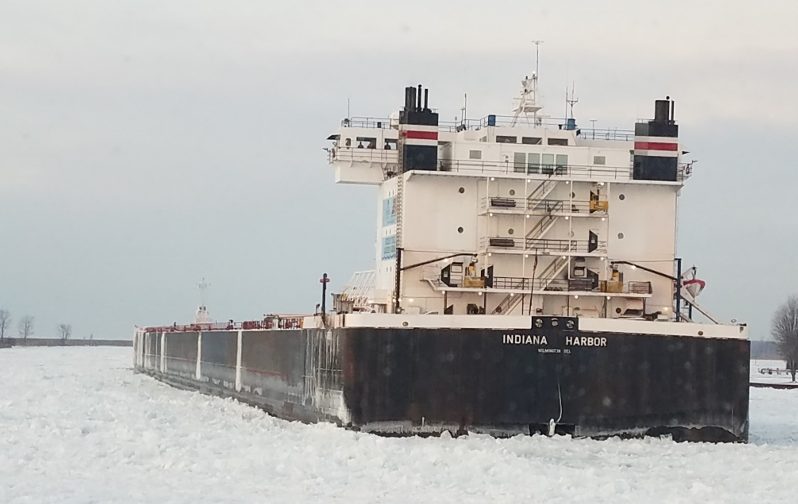A major East Coast storm, coming on top of a deep freeze extending its grip, shut down New York ferries and escalated waterway ice conditions across much of the eastern U.S.
Facing a coastal blizzard that dropped snow from Savannah, Ga., to Maine, Coast Guard officials set ice conditions for ports as far south as Hampton Roads, Va., where the Virginia Capes were closed at 6 p.m. Wednesday to all inbound and outbound shipping. Traffic within the port was limited to vessels less than 2,500 gross tons.
There was significant ice on Chesapeake Bay’s Eastern Shore and tributaries, and the Coast Guard cutter Chock, a 65’ small harbor tug, was dispatched from Baltimore to assist with icebreaking and relief efforts around Tangier Island, Va.
The isolated watermen’s community, where fishermen have contended with dangerous ice conditions for days, was lashed with gale winds and drifting snow Thursday. Ice condition 2 was likewise set for the Potomac River, Maryland Eastern Shore and the Chesapeake and Delaware Canal.
The big freeze and wind conditions disrupted some ferry services around New York City. Entering the New Year, the public NYC Ferry system had to contend with heavy icing at its Rockaway landing. On the morning of Jan. 4 the Rockaway-Wall Street service was suspended due to deteriorating blizzard conditions, and soon all routes were suspended for the afternoon and evening.
Seastreak cancelled its Thursday runs between northern Monmouth County, N.J., and the city, while NY Waterway revised its Thursday-Friday schedule for those routes, cancelling some trips. Just before the New Year, NY Waterway suspended its upper Hudson River crossings at Haverstraw and Newburgh, N.Y., because of ice conditions in the river, substituting bus service for customers.
Coast Guard icebreaking tugs have been busy on the Hudson, clearing channels and assisting tug and barge movements, critical to the Northeast region supply of home heating oil. The Coast Guard New York ice report issued Jan. 3 told of heavy plate and brash ice coverage of 80% to 100% on much of the Hudson north of Newburgh.
In the wake of the blizzard, another major outbreak of Arctic air was forecast, part of a persistent pattern of jet stream meandering that in recent years have brought chills as far as the Gulf of Mexico coast.
The New Year has already brought rapid icing to Lake Erie, the shallowest of the Great Lakes and first to freeze. On Tuesday and Wednesday the Neah Bay and Morro Bay, two 140’ Coast Guard Bay-class icebreaking tugs based in Cleveland, Ohio, went to the rescue of four ships beset in ice.
Ice coverage on Lake Erie is around 20%, well above the seasonal norm of 5% for early January, according to Coast Guard officials. U.S. and Canadian icebreakers work together in the annual programs dubbed Operation Coal Shovel, keeping open waterways in southern Lake Huron, Lake St. Clair, the St. Clair and Detroit river system, Lake Ontario and the St. Lawrence Seaway.
Weather reports indicate that Lake Erie will build up more ice in the coming week, Coast Guard officials said. Icebreaking operations continue, with the shipping season set to end Jan. 15.
Ice formations have been disrupting inland waterway barge traffic, as the extreme cold weather over central states builds ice accumulations on rivers and at locks and dams, the U.S. Department of Agriculture noted in its weekly Grain Transportation Report.
By Jan. 3, barge operators reported all operations on the Illinois River had ceased due to heavy ice, according to the GTR.
“For the week ending December 30, downbound grain barge tonnages at Mississippi River Locks 27 (near St. Louis) were down 27 percent, mostly due to a decrease in soybean movements,” the report stated. “However, due to better navigation conditions and no repair delays, downbound grain tonnages at Ohio River Locks and Dam 52 were up 24 percent for the same period.
“With the cold temperatures and icy conditions, grain barge rates, as of January 2, rose 15 percent for export grain on the Illinois River and 9 percent on the Mississippi River at St. Louis as compared to last week.”




